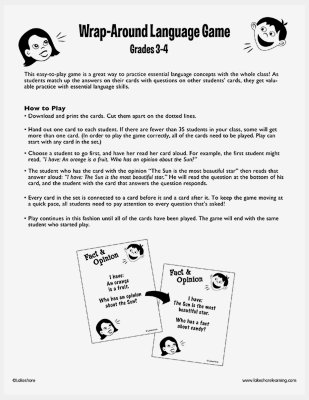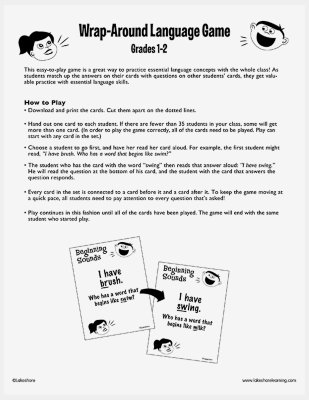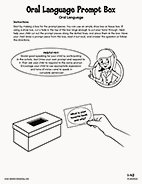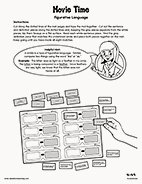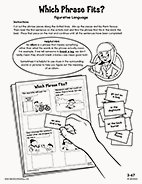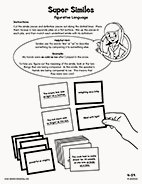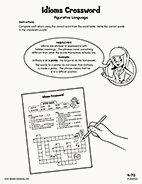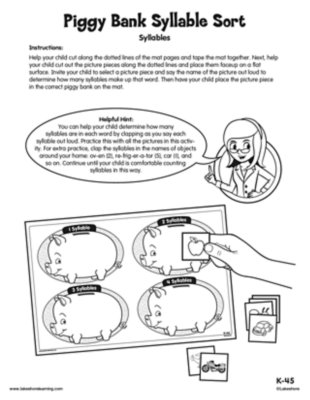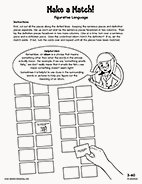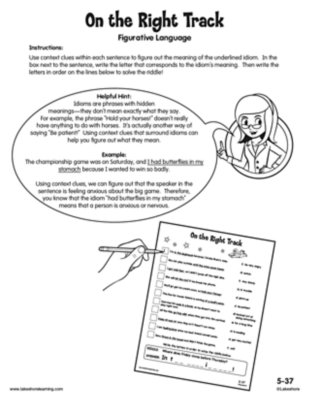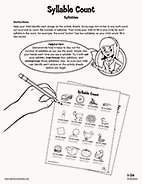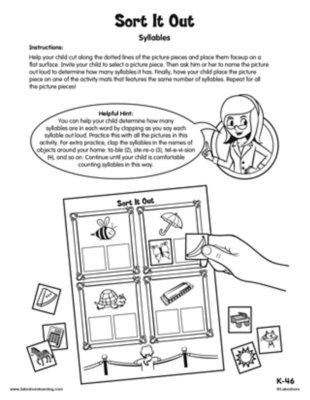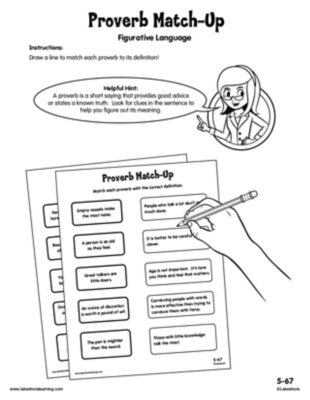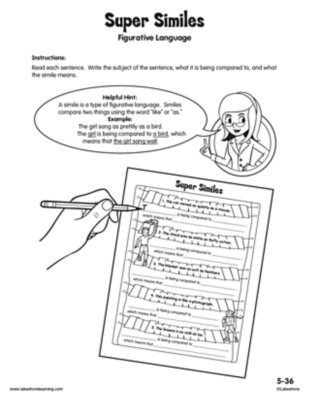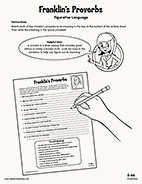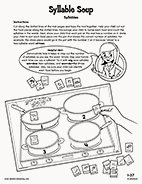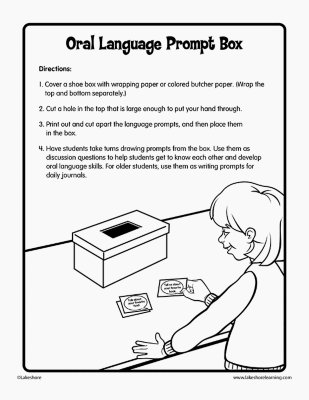
When entering first grade, your child should be able to describe familiar people, places, things and events and express their thoughts, feelings and ideas clearly.
View worksheetWhen entering fourth grade, your child should understand figurative language, such as idioms, and be able to distinguish between the literal and nonliteral meanings of words. For example, “It was a piece of cake!”
View worksheetWhen entering fourth grade, your child should understand figurative language, such as idioms, and be able to distinguish between the literal and nonliteral meanings of words. For example, “It was a piece of cake!”
View worksheetDuring third grade, your child will learn to understand figurative language, such as idioms, and distinguish between the literal and nonliteral meanings of words. For example, “It was a piece of cake!”
View worksheetDuring fourth grade, your child will learn to understand the meaning of figurative language, including similes, metaphors and idioms.
View worksheetDuring fourth grade, your child will learn to understand the meaning of figurative language, including similes, metaphors and idioms.
View worksheetDuring kindergarten, your child will learn to count and say the syllables in spoken words. For example, your child should understand that “kitten” has two syllables: kit•ten.
View worksheetDuring third grade, your child will learn to understand figurative language, such as idioms, and distinguish between the literal and nonliteral meanings of words. For example, “It was a piece of cake!”
View worksheetWhen entering fifth grade, your child should be able to figure out the meaning of figurative language, including similes, metaphors and idioms.
View worksheetWhen entering first grade, your child should be able to count and say the syllables in spoken words. For example, your child should understand that “kitten” has two syllables: kit•ten.
View worksheetDuring kindergarten, your child will learn to count and say the syllables in spoken words. For example, your child should understand that “kitten” has two syllables: kit•ten.
View worksheetDuring fifth grade, your child will learn to interpret examples of figurative language, including similes and metaphors, based on the context in which they are used. Your child will also learn to recognize and explain the meaning of common idioms and familiar sayings and expressions, such as, “A bird in the hand is worth two in the bush.”
View worksheetWhen entering fifth grade, your child should be able to figure out the meaning of figurative language, including similes, metaphors and idioms.
View worksheetDuring fifth grade, your child will learn to interpret examples of figurative language, including similes and metaphors, based on the context in which they are used. Your child will also learn to recognize and explain the meaning of common idioms and familiar sayings and expressions, such as, “A bird in the hand is worth two in the bush.”
View worksheetWhen entering first grade, your child should be able to count and say the syllables in spoken words. For example, your child should understand that “kitten” has two syllables: kit•ten.
View worksheet

